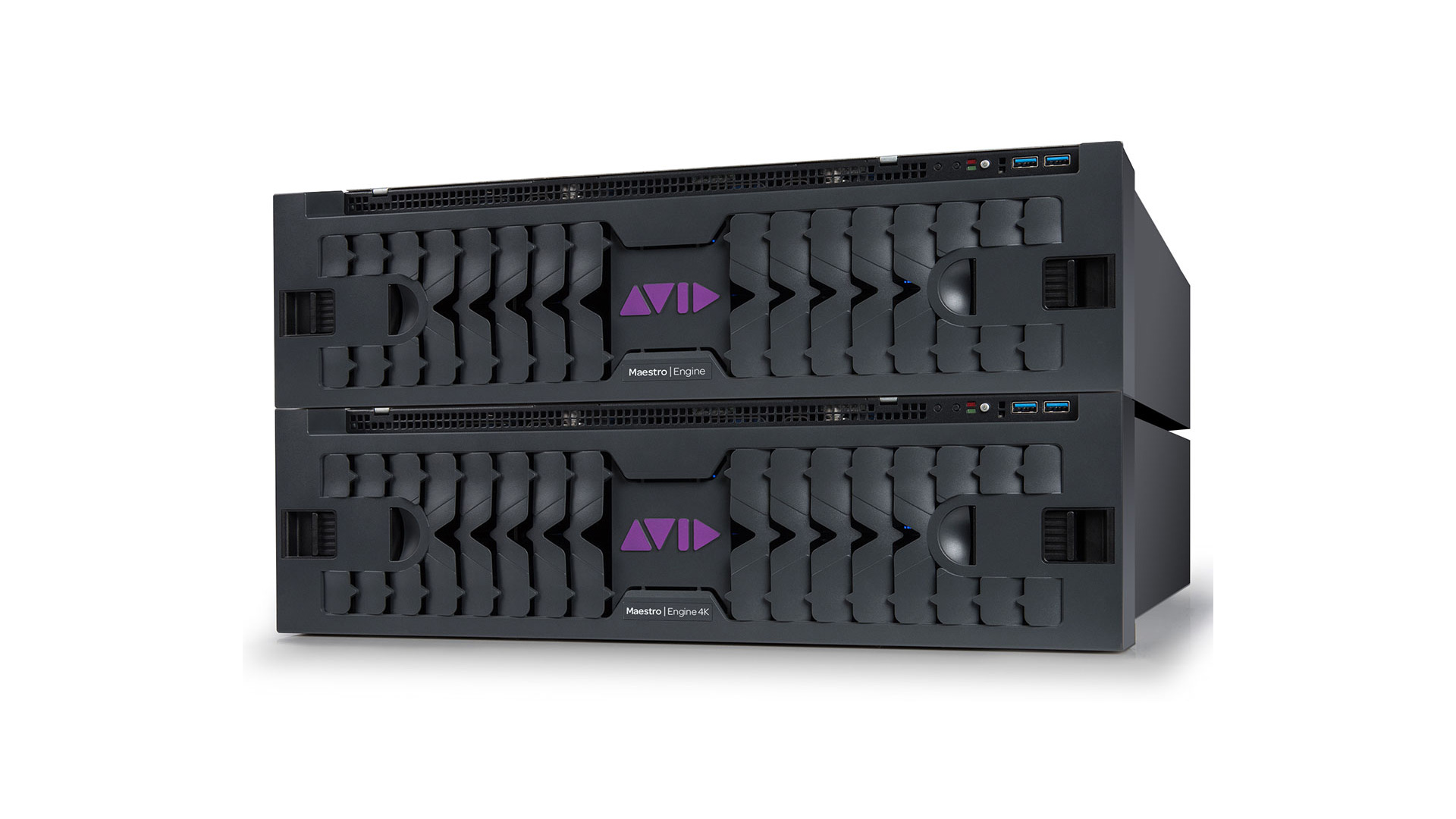At IBC, Avid announced the new Maestro Engine, a real-time graphics and video hardware rendering platform for its Maestro Graphics products. Supporting both SDI and video-over-IP, Maestro Engine is designed to scale from HD to UHD resolution, allowing broadcasters to move UHD, HDR and IP workflow into their facilities without impacting ongoing HD- and SD-SDI operations.
The new platform works with Avid’s existing Maestro suite of products — they include Maestro Designer, Maestro Live (for sports), Maestro AR and Maestro Interactive — for creating graphics for news, sports, branding, and special events, but accelerates performance so that broadcasters and other users can scale processing power to generate high-quality virtual studios, AR elements and video walls. Existing Maestro graphics content and production workflow will be forward-compatible with the Maestro Engine, and HDR support is “coming soon,” the company said.
Avid said the Maestro Engine works with its RenderEngine software to render graphics at the highest possible quality as well as upscale or downscale content or crop it. That makes it easy, for instance, to preview a massive video wall over a single HD feed when necessary.
The platform is also meant to ease SDI-to-IP workflow transitions, allowing facilities to deploy it with in-place SDI infrastructure and move to IP over existing 10Gb fiber networks when they’re ready to flip the switch by changing out interface boards. Maestro Engine has two 1GbE connections and a 10GbE option, and supports codecs including Avid’s own DNx lineup as well as XDCAM 50, AVC-I, XAVC-I and QT RLE, Avid said.
Maestro Engine can deal with live video sources or video files stored on local drives, or networked Nexis and other storage systems, and a second Maestro Engine can be deployed as a backup for live on-air systems.
“As broadcast production evolves, broadcasters increasingly need flexible, future-proof graphics rendering hardware to enable them to tell more compelling stories,” said Avid Director of Broadcast and Media Solutions Marketing Ray Thompson in a prepared statement. “The new Maestro Engine enables customers to differentiate and elevate their content with compelling data-driven augmented reality graphics and virtual sets delivered in real time.”
The base Maestro Engine allows up to eight video insertions and up to four outputs. A step up in hardware to the Maestro Engine 4K allows up to 16 video insertions and up to eight outputs, or up to four fill and four key outputs for UHD production, Avid said. The system uses an I/O card designed for ultra low latency, yielding a constant two-frame delay from input to output. A web-based interface is used for system management, so users can make changes from any networked computer or device, and an open API will allow users to code custom control software, Avid said.
In addition to the Maestro Engine announcement, Avid came to IBC 2018 with a complete web-based version of its MediaCentral production and management platform, capping a key period of development in the company’s history.
With MediaCentral in place, Avid voiced a strong message on IP-based workflow, demonstrating features including NewTek NDI output from Media Composer; IP I/O on FastServe video servers; audio-over-IP with the Venue S6L for live sound using AVB and Dante protocols and MADI connectivity; at Cisco’s stand, IP output from Media Composer to a Cisco IP Fabric for Media; and, in the IBC Future Zone, a growing-file workflow for capturing from an ARRI camera as a plug-in from Nablet rewraps files to MXF in real time for live MXF ingest via IP to Media Composer.
Avid: www.avid.com
